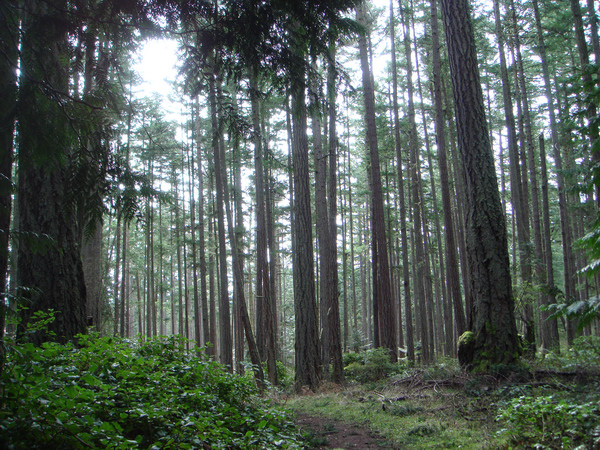
Our Classroom
This week the S Pod, as we Spring 2012 Beam Reachers are now called, discussed at length about “sustainability science”. So, what is sustainability science? Each of us has a unique definition of what sustainability means to us, and many writers have proposed a variety of definitions.
My personal definition of sustainability has its foundation in the very meaning of the word “sustainable”. The word sustainable connotes, first, the “capability to be sustained”, and second, “using a resource such that the resource is not depleted or permanently damaged”.
In implementing a “sustainable project”, it is important to make sure the project can be continued on a long-term basis. I recently visited a rural village in the Samburu region of Kenya, where NGOs have installed water filters for rainwater reservoirs. However, when I was there, the water filters were not functioning because the NGOs had failed to adequately educate the local community in how to properly use the filters. Therefore, one could say that this project is not sustained, and such a project is not sustainable if the local community does not get involved.
How does the above example translate to sustainability science, and in our case, environmental conservation? One of the most important element in sustainability is education. By imparting the knowledge and idea pertaining to one’s project to the local community, the local people could then become the engine of the project, and these knowledge, ideas and good practices could hopefully be passed down to the next generation and inspire students to become field-level experts.
Two days ago, Katie Fleming from REsources, an NGO based in Bellingham, WA, shared her experiences in community outreach. She implements a model which she calls “community-based social marketing”. This model markets an environmentally friendly idea or practice, such as to turn off the engine when the car is stopped for more than 30 seconds, by educating school children to influence their parents, giving small incentives, and by adding a “peer pressure” element”.
I feel that this is a wonderful practice in sustainability, in both aspects of ensuring the project is sustainable, and in promoting a more sustainable use of resources.
Moving on to the second definition of sustainability, which is the sustainable use of resources. The household definition of “sustainability” usually refers to the popular concept: to make use of renewable resources, and to reduce, reuse and recycle consumer products. One aspect of sustainability science could be to use a research method that is in line with the above practice, so that the research could be economically sustainable and have minimal impact on the environment.
Sustainability science in a larger scale would be to examine the current state of environment, and to encourage essential economic practices such as agriculture and transport, to move towards the sustainable use of our shared natural resources.
Our Beam Reach instructor, Dr. Robin Kodner shared with us her personal definition of sustainability during our round-table discussion. One of Dr. Kodner’s current research project is to measure the level of Domoic Acid, a neurotoxin produced by the diatoms Pseudo-nitzschia, in nearshore waters. Her hypothesis links higher levels of Domoic Acid in the water with altered water temperature or nutrients leached from agricultural lands.
Dr. Kodner’s definition of sustainability science is: using natural science methods to study the social and environmental interactions and changes, hence providing the data as a basis of better management and policy. And also, to come up with innovative solutions.
In Kenya, our class did a small insect abundance and variety survey on subsistence farms. Our investigation was brief, but we compared and critically assessed the condition of the two farms. The overarching goal of such a survey was to reduce pesticide use by relying on native species to reduce herbivory on crops. One method is to have weedy margins to agricultural plots. Reducing pesticide use reduces the amount of toxin that could be leached into streams or groundwater, which helps to ensure the sustainability of local water resources.
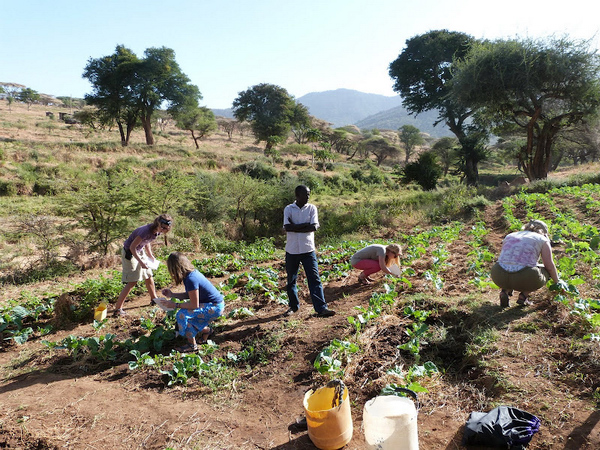
Insect Abundance and Variation Survey in Kenya, 2012
I am really glad that my experiences in Kenya have enabled me to contribute ideas in this class. My current research direction is to find out what aspects of orca conservation might human interest come into conflict against. I look forward to learning more about the Salish Sea and my beautiful classroom — San Juan Islands!
Read More
It is hard to imagine that there could possibly be a more beautiful environment to learn  in. Waking up every morning to the snowy peaks poking their heads over the emerald islands to greet me, and remind me why I am here. It’s so important that the irreplaceable and enchanting ecosystems that make up the San Juan Islands are preserved.
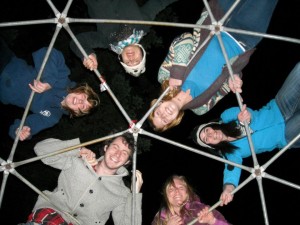
This first week we have talked extensively about what sustainability science means to us, and the different ways we can practice sustainability over the next nine weeks of our course. At home I try to live a sustainable life style, but I have never considered the different ways sustainability can be practiced when doing science. To me sustainability science is the practice of environmentally conscious science that aims at furthering our knowledge of effective ways humanity can live in balance with nature.
We have only been at the Friday Harbor Labs for a week, and although we have yet to see any orcas, there has been no lack of thing to do, and people to laugh with. After a week packed with learning we finally had a chance to go to the whale museum today! http://www.whalemuseum.org/ What an amazing resource to have right in our backyard!!
Read More
I look out of the window to see the great pines of the west coast, lush green fauna, and the blue-green waters of the harbor drawing me out to explore as I write from the UW Friday Harbor Labs on San Juan Island. I still remember the first time my mom and I came to visit the San Juan Islands; I have been waiting to return ever since. There is something incredibly special about this place. Often whilst walking around I feel there is magic in this fresh, salty air that blows in from the sea.I am not sure what has been more captivating to me during this first week, the scenery or the academic atmosphere I have been immersed.
From the moment our class sat down on the ferry the educational immersion into the Pacific Northwest ecosystem began. Each of us had enthusiastic curiosities about the ecology of the San Juan Islands and of course the Southern Resident Orca Whales that live here. I knew I was with a great group of people from the start. Our first week has been filled with many adventures, both in and out of class time. No matter what we are doing I can guarantee that there will be sounds of laughter, singing with guitar playing, and lots of whale talk present.
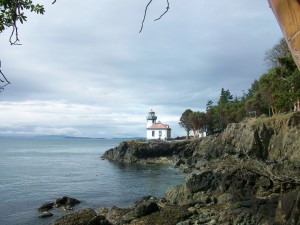
Lime Kiln
The weather has been a perfect introduction to living in the Pacific Northwest. We had a few days with misty rain and strong winds, but have also been incredibly lucky to get decent amounts of sunshine with clear skies. As a class we have made two trips to Lime Kiln Point this week where we have started our introductions to bio-acoustics and observing the ecology of the ecosystem.Lime Kiln is one of the most refreshing places to be. Making your way through the madrones trees down to the rocky shore, the breeze blows in from Haro Strait and it seems that life can’t possibly get better than this.
Of course, not all of our time can be spent out and about adventuring; we have also had lots of interesting lectures and stimulating discussions. Basic whale biology and the natural history of orca whales have been a major topic this week, as well as discussions about sustainability science. Sustainability science is an up and coming form of science that focuses on, you guessed it, sustainability and science. You may be wondering how one actually defines and practices sustainability science…well we have been thinking on this question for a good part of our class time this week. My personal definition has already begun to shape itself into something different than its origin. I think that it is best to first think about what it means to be sustainable. I believe that sustainability is the balance between the environment and human civilization that promotes a level of social equity which we are able to maintain for future generations. Sustainability science studies subjects with the goal of contributing to the search for the “sustainable balance†while also practicing sustainable methods throughout the research process. Looking ahead to the weeks to come, I am sure that both of these definitions will evolve, but I am enjoying each and every second that keep my brain wheels turning. This spring our class is lucky enough to be involved in the controversial Cherry Point coal terminal debate by contributing base-line data to the scoping process. Katie Fleming from ReSources for Sustainable Communities met with us for an afternoon to share sustainable ideas from the region, as well as give us an introduction to the impacts from the proposed coal terminal.
I look forward to spending more time learning about this particular issue and doing some “science” in two weeks when we make our first cruise on the Gato up to Cherry Point!
Read More
Ever since my freshman year I have been hoping I would get into the Beam Reach program and now that I have it feels slightly surreal. We moved in to the Friday Harbor Labs this past weekend and  just began classes on Monday. We have only been here a week and it feels like I have known my classmates for much longer. When not in class, which is a short amount of time, we have been exploring Friday Harbor, venturing to Lime Kiln, and even learning how to row in rowboats… sort of.

I can already tell this is going to be an amazing quarter and I am going to be sharing it with some really awesome people.
We have hit the ground running in class with discussions on sustainability and defining what it means to each of us. I have discovered that it is a very difficult concept to sum in a few sentences but I’ll give it my best shot. I feel that sustainability science is a science that investigates and promotes technology that combines human and environmental goals in order to sustain and preserve our natural resources for further generations. Here at Beam Reach we focus on marine science while practicing sustainability. We are committed to studying the resident killer whales while minimizing our impact on them by using a diesel electric catamaran for collecting research called the Gato Verde. We will get to go out on the boat in a few weeks for a test run up to Cherry Point and I cannot wait.
This is going to be an incredible adventure, I hope you’re all enjoying life as much as I am.
Read More
After an amazing two weeks Spring break travelling from coast to coast, I have finally made it to the idyllic Friday Harbor Labs in the San Juan Islands. It is difficult to give the place justice through words alone. I feel so fortunate to be living for the next ten weeks in a place where tiny evergreen islands litter the sea and snow capped mountains touch the lapping waters. How can anyone be expected to study in such a gorgeous environment full of distraction? I feel I constantly want to be outside exploring! In some respects the area reminds me of Maine, however, on a more dramatic scale. Since meeting the other Beam Reachers, in Seattle little under a week ago, we have embarked on numerous adventures together. It is so great to be surrounded by like-minded students who share a passion for conservation and the environment. If you wander past the ‘S1 duplex’, regardless of time of day, one can expect to hear music playing and the sounds of laughter in the air.  Yes, there has been lots of laughter! It has also been great integrating with the other students and researchers at the lab. Hearing about their work, I would argue that the quality and diversity of the research generated at the lab is astonishing.
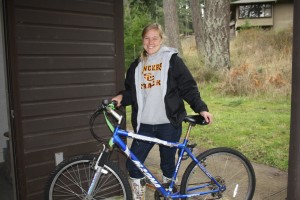
Rachel: Lots of exploring to do!
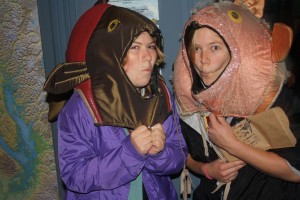
Did I mention loads of laughter?
As a class, it feels that we have already learnt so much; way more than I could have envisioned at the start of the week. So far, we have covered basic whale biology, killer whale family structure, population trends, and even dipped in to whale genealogy. In addition to the marine mammal component of this ten week intensive course, we are also learning the methods of practicing sustainability science. But what does this involve? After numerous discussions, both inside and outside of the class room, it has become evident that the scope of ‘sustainability science’ is broad, and the definition specific to each individual. Throughout the week, having grappled with some case studies and current literature, I have found my own personal definition to have evolved. At the moment, I would describe it as an interdisciplinary approach to science that takes into consideration local and global perspectives, whilst remaining conscious of environmental, social and economic factors. Through innovation, education, and the evaluation of current practices we can both mitigate and minimize our footprint on both a regional and global scale. Because this is still a working definition, my hope is to revisit and reference it throughout the quarter. I would encourage any readers to pause for a moment and think of their own definition. I would also like to draw the reader’s attention to RE-sources; a local organization run from Belligham, WA. (http://www.re-sources.org/home). Katie Fleming, a RE-source community outreach manager, came in to draw our attention to local sustainability science issues, and the things we [students] can do to get involved. I was particularly impressed by the examples she gave that highlighted various methods, such as workshops and citizen training, used by RE-source to empower local communities.  Hearing the perspectives of an outside source has been insightful. In addition to Katie Fleming, Lynne Barre from NOAA came in to give an overview of Southern Resident Recovery.
Given the success of the first week, I can’t wait to find out what next week has in store for us!
Read More










 Twitter
Twitter LinkedIn
LinkedIn Facebook
Facebook